Medical detoxification occurs in a controlled, medically supervised environment as an individual experiences withdrawal from drugs or alcohol. Drinking alcohol or using drugs can cause physical dependence over time and stopping use can kick in withdrawal symptoms. The detox process treats immediate effects of stopping use to remove toxins left in the body. The following is a guide to what a person can expect during opiate detox.
Medical Detox
Withdrawal from certain addictive substances must be done safely, preferably under the guidance of a treating physician or within a detox unit. Individuals with long term addiction and use may experience more severe symptoms and require more support and medication throughout the process. Taping is a way of decreasing doses of the drug slowly to mitigate withdrawal symptoms.
Rapid Detox
Rapid detox occurs while individuals are asleep under general anesthesia. People are given intravenous injections of medications called opiate blockers which stop the action of narcotics and opiate drugs in addition to injections of other medications to reduce symptoms of withdrawal. Opiate blockers such as naltrexone, naloxone and nalmephine can support physical detox within 4 to 8 hours. Rapid detox takes place in the intensive care unit of a hospital. Individuals are usually discharged within 48 hours following recovery from anesthesia and assessment of physical status.
Stepped Rapid Detox
An alternative to rapid detox provides small doses of Narcan (Naloxone) injected under the skin and taken orally every hour or so. Taken together with reduced withdrawal management medications, the approach uses a slower oral and subcutaneous route to rid the body of opiates more slowly than intravenous Rapid Detox. Pacing can be controlled and responsive to withdrawal symptoms which may develop.
Ultra Rapid Detox
People are put under general anesthesia and given a drug called Naltrexone which blocks endorphin receptors. The withdrawal process is accelerated, pushing the individual into 100% detox within 5-30 minutes. Anesthesia makes the process more tolerable. It is also quite costly and has significant medical risk involved.
Outpatient Detox
Outpatient medical detox is usually safe and effective for people who may have mild to moderate withdrawal symptoms. Opiate detox in outpatient primary care settings can be accomplished with a variety of medication such as buprenorphine-naloxone or clonidine alone or with naltrexone. Buprenex, approved by the FDA, can be given on an outpatient basis by physicians who received a required eight-hour training. Detox using Buprenex can take between 7-14 days.
Methadone
The most common method of opiate detox is Methadone, in an approved clinic. The slow tapering for a patient from the usual dose to zero over a period of approximately 21 days may be uncomfortable and individuals use drugs during withdrawal. Methadone supports recovery for some individuals but people interested in using this method should first speak with a treating physician.
Detox is a crucial part of recovery from addiction for some individuals. If you or a loved one are searching for a safe space to detox and receive treatment, the Villa can help. Contact us to find out how we can support your journey to recovery with info and resources on detox, treatment and other options.

